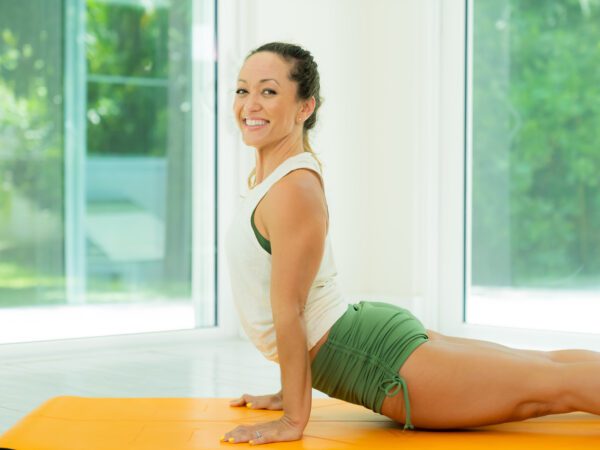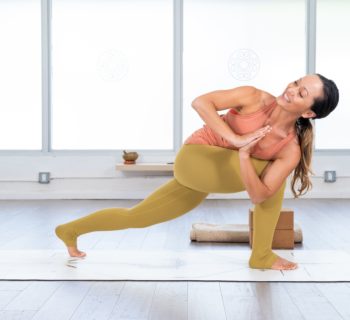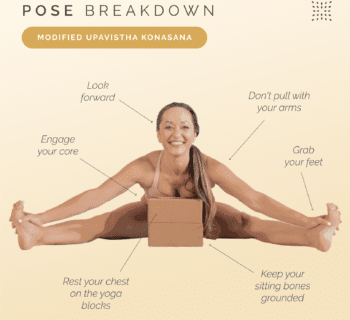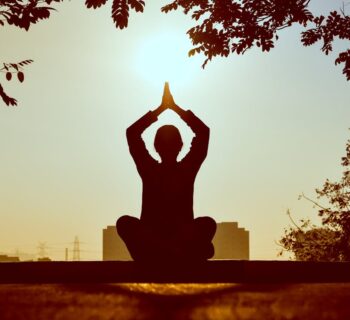Handstands are a part of my yoga practice only in as much as I try to make everything I do a part of my yoga practice. Practically speaking, I keep them entirely separate and approach them with different mindsets. This is mainly a matter of personal preference, but I feel so strongly about it that I wanted to explain it here.
Reason 1: My personal handstand goals
I want my handstand to look like a circus handstand and not like the stereotypical “yoga” handstand. As a matter of personal preference, I like them better. So, I learn from hand-balancers instead of yoga teachers.
Generally speaking, hand-balancers who practice in the context of circus art, optimize their handstands for i) aesthetics (e.g., straight line, open shoulders) and ii) progressions (e.g., being in an alignment that allows easy progression to more advanced skills such as one-arm handstand).
Yoga practitioners are usually less concerned with that, and instead optimize handstands to be able to easily perform them as part of a sequence (e.g., an add-on to a sun salutation).
There are other disciplines for approaching handstands, such as calisthenics and gymnastics, and those too have different goals and ideals. Of course, there is also plenty of overlap between disciplines and practitioners.
Reason 2: Time spent
If you only ever practice handstands as part of an asana sequence, you will limit the extent to which you can progress. Modern day yoga classes create an illusion that advanced handstands can be learned by attending a “handstand flow” once a week. In reality, advanced handstand skills require hours of practice for many years. If anyone tells you otherwise, you should be suspicious.
Reason 3: Mat versus floor
It’s harder to balance a handstand on a cushy surface like a yoga mat and furthermore, it’s bad for your wrists. (Admittedly, if you are only doing short-duration handstands as part of a “flow,” I don’t suppose it would matter much.)
Reason 4: Time of Day
My asana practice happens first thing in the morning, before anything else (except pranayama). Handstands happen later in the day, when the sun is up and I’ve had something to eat and possibly coffee. It makes for a more successful (read: more fun) practice.
Reason 5: Music vs. no music
I always practice asana in silence, which makes me sound very austere. But I was taught (by my Ashtanga teachers) that music is a distraction from your present state of mind, so if your intention is to observe yourself (which is why we practice asana) then it doesn’t make sense to play music. Since the primary intention of my handstand practice is quite different from that of my asana practice, I often play music.
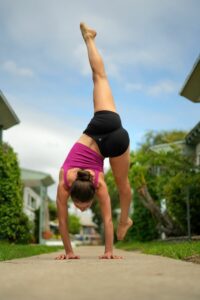
If these reasons seem frivolous, then they serve to illustrate the fact that the divide between asana and other movement practices is blurry. Why does a chaturanga count as asana, and a push-up doesn’t?
Is it the intention that makes them different? The intention is the same: to be stronger, healthier, more body-aware. Hatha yoga includes all the practices that “purify” and align/strengthen/prepare the body, as a prerequisite for the spiritual path.
Is it the tradition that makes them different? The tradition of asana as we know as shrunk considerably in modern times, and there is evidence (in texts such as Haṭhābhyāsapaddhati) of a much broader range of exercises than what we would today consider “asana” – including things like climbing ropes, and also one-arm handstands.
Should it matter if you already drank coffee? If you were playing music? Whether or not your handstand fits into a surya namaskar? Maybe these are all just technicalities.
My handstand practice is sacred in its own way. It is a constant exercise in patience, equanimity, concentration, and especially in de-identifying with what I can and cannot do. At the end of the day, my “non-asana” handstand practice has been perhaps my most transformative yoga practice of all.
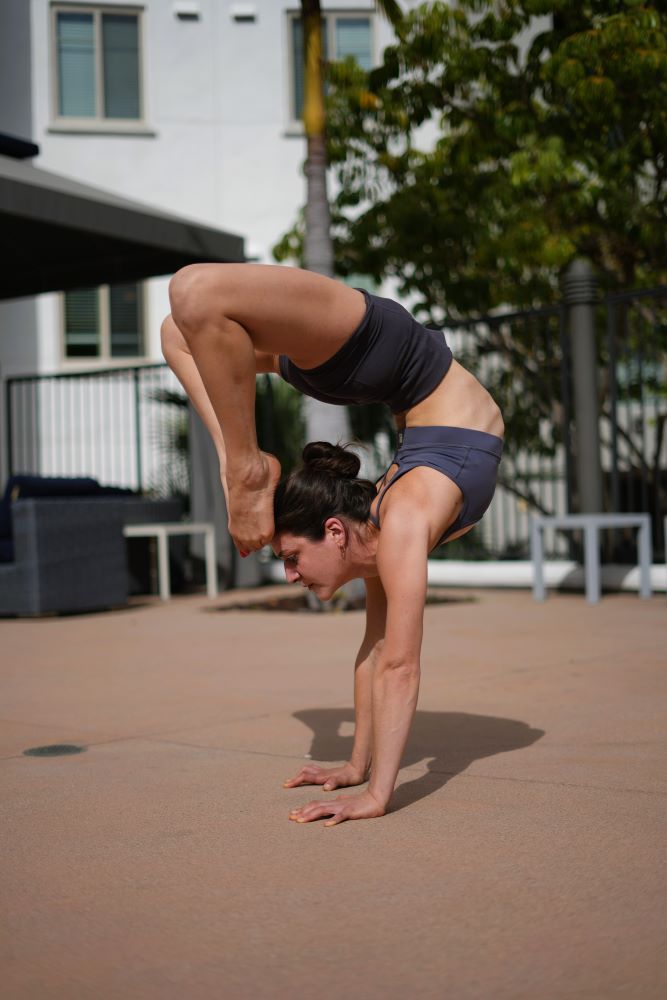
Jillian is a yoga teacher with over 500 hours of teacher trainings and hundreds of hours of teaching experience. A PhD scientist and a student of Chinese Medicine, she draws on her knowledge of Western and Eastern anatomy, and loves to find the intersection between the two schools of thought. Jillian also trains hand-balance, and has previous experience as a competitive figure skater. ig: @jillianjastrz
This blog article was previously published on her website, moreblissplz.com.



